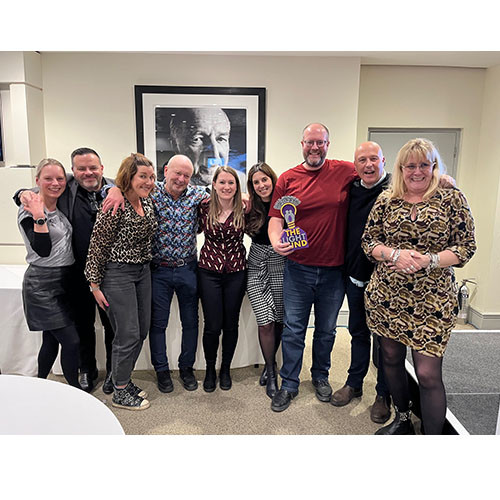Start Licensing’s Ian Downes finds some good examples of how Licensing PLC is providing a useful helping hand to the high street.
There is no doubt that there are significant challenges facing retailers and that the shape of the ‘high street’ is changing. I am sure that we have all noticed empty shops in our local high streets and the loss of well known retailers (not always national names, sometimes much loved local retailers).
Against this backdrop I do think Licensing PLC could provide a useful helping hand to the high street. Licensing in all its guises can help engage and motivate consumers. This weekend’s Platinum Jubilee celebrations provided confirmation of this – Paddington ‘in conversation’ with the Queen was one example as was the appearance of characters like Shaun the Sheep, Peppa Pig, The Gruffalo, Wallace and Gromit in Sunday’s parades.
Licensing can cut through things and has clear commercial potential. There is definitely scope for licensing to play a wider role in helping the high street. This thought was reinforced by a few examples of licensing I saw in the market this week where licensing and licensed ranges were being used very prominently by retailers.
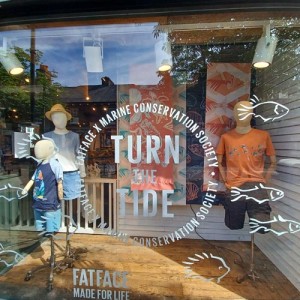 The first example I would highlight was FatFace’s partnership with The Marine Conservation Society. The Turn The Tide partnership and the associated products that are part of it were prominently displayed in FatFace’s window. The display and messaging were very engaging. This is a great example of a retailer using a partnership to stand out in the retail crowd, to make a statement but also using it to create retail theatre and engagement.
The first example I would highlight was FatFace’s partnership with The Marine Conservation Society. The Turn The Tide partnership and the associated products that are part of it were prominently displayed in FatFace’s window. The display and messaging were very engaging. This is a great example of a retailer using a partnership to stand out in the retail crowd, to make a statement but also using it to create retail theatre and engagement.
FatFace is using its high street presence to engage with consumers and to tell a story. Working with The Marine Conservation Society gives it authenticity, but also marketing content and it is content it has used well on the high street. Indeed, retailers like FatFace are making a great contribution to keeping the high street fresh and interesting. This recognises that you can sell to people through a positive message, good merchandising and a compelling product offering. Licensing can help with all of these things.
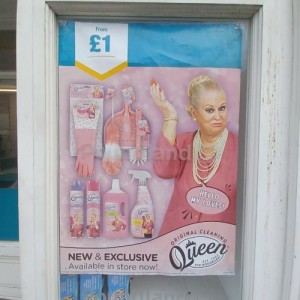 I spotted a second example of licensing acting as a high street sales force in Poundland. It has launched a cleaning products range with Kim Woodburn, who was one of the presenters of How Clean Is Your House on TV. Kim quickly became a media star and provided a new take on household cleaning. Her series was very successful. Poundland has a good track record of working with TV celebrities to create exclusive ranges. It is a model that works and in the ever competitive value sector gives it a clear point of difference. I am sure Kim is still known and recognised by consumers and she sparks an immediate association with cleaning.
I spotted a second example of licensing acting as a high street sales force in Poundland. It has launched a cleaning products range with Kim Woodburn, who was one of the presenters of How Clean Is Your House on TV. Kim quickly became a media star and provided a new take on household cleaning. Her series was very successful. Poundland has a good track record of working with TV celebrities to create exclusive ranges. It is a model that works and in the ever competitive value sector gives it a clear point of difference. I am sure Kim is still known and recognised by consumers and she sparks an immediate association with cleaning.
As this is a core area for Poundland in regards to its product offering, I am sure it is always looking for a fresh angle within the category. In this case, licensing has provided a point of difference. Kim was featured prominently on posters in shop windows promoting the range. Poundland has recognised the power of celebrity licensing, but also the selling power of shouting about what you are doing in the high street – a setting you that can influence consumers directly in.
While there are more restrictions around on-pack promotions these days, it is clear that licensing still has a role to play in the FMCG category and rather like the high street a well chosen and deployed licence can create a point of difference in competitive categories and also allows brands to talk about something other than price.
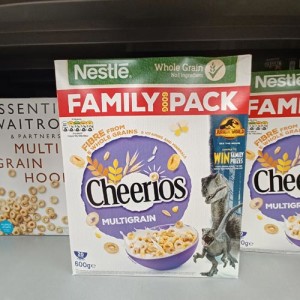 The cereal category is a fiercely competitive one, with lots of price promotions and offers in the category. It used to be a category that featured a lot of licensing activity with in and on-pack promotion. That is not the case these days but it is still a category that licensing partnerships can feature in. At the moment Nestle is featuring a Jurassic World movie promotion offering the chance to win a range of prizes linked to the film. The promotion is running across a range of Nestle’s cereal brands including Shreddies and Cheerios. This is a good example of how a licensing style partnership can make an impact in a competitive category and it is a model that could be applied to other parts of the FMCG market.
The cereal category is a fiercely competitive one, with lots of price promotions and offers in the category. It used to be a category that featured a lot of licensing activity with in and on-pack promotion. That is not the case these days but it is still a category that licensing partnerships can feature in. At the moment Nestle is featuring a Jurassic World movie promotion offering the chance to win a range of prizes linked to the film. The promotion is running across a range of Nestle’s cereal brands including Shreddies and Cheerios. This is a good example of how a licensing style partnership can make an impact in a competitive category and it is a model that could be applied to other parts of the FMCG market.
On the subject of selling, I have always enjoyed going to trade shows and I think the ‘trade show show’ is very much back on the road. This week I visited PG Live, billed as ‘The International Greeting Card Show’. It is a show that is really well presented and curated. It has a real sense of purpose and focus. Of course, licensing and greetings cards are well related and interconnected so there is no great surprise to see licensing featuring throughout the show. Indeed a number of exhibitors are described as ‘Licensing Friendly’ indicating they are happy to chat about licensing – either buying in rights or selling rights. One point to note is that PG Live really showcases the creative talent in the card industry and it is noteworthy to see so many owner/creators of card companies.
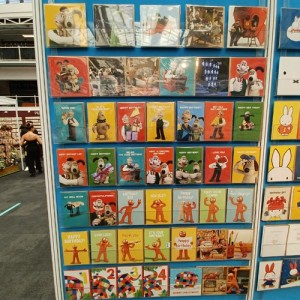 On a personal note I was delighted to see Hype launch its range of Wallace & Gromit cards at the show. PG Live gives card companies a great opportunity to launch new ranges in an efficient and impactful way. Hype certainly seized the opportunity well. It is still a great thrill to see deals you have developed come to fruition. I remember the initial meeting with Hype about this range taking place in Liverpool which involved brand owner Aardman. It is a reminder that licensing deals can take time to work through in design and development terms, and how important it is to get things right design wise.
On a personal note I was delighted to see Hype launch its range of Wallace & Gromit cards at the show. PG Live gives card companies a great opportunity to launch new ranges in an efficient and impactful way. Hype certainly seized the opportunity well. It is still a great thrill to see deals you have developed come to fruition. I remember the initial meeting with Hype about this range taking place in Liverpool which involved brand owner Aardman. It is a reminder that licensing deals can take time to work through in design and development terms, and how important it is to get things right design wise.
Interestingly, Aardman already works with Danilo on Wallace & Gromit cards, but Hype and Danilo reach different parts of the market so can work in tandem. This underpins the point that the retail landscape is a complex one that needs to be navigated carefully by licensees.
Danilo uses licensing and licences very well. It offers retailers a great spectrum of licensing genres and is very good at building ranges in new licensing genres, for example manga and anime. Licensing is ever evolving and new opportunities emerge as consumer interest shifts. In this context a well chosen licence can be a way to reach a difficult to reach consumer group.
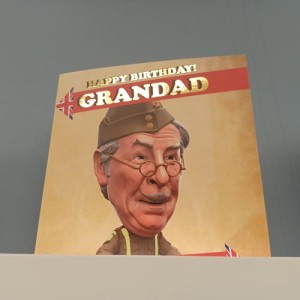 Another thing I think Danilo does well – and was demonstrated on its PG Live stand – is matching specific licences with specific card giving occasions or subjects. It matches things up well. A great example is in the Grandfather, Grandmother and Nan cards. It uses brands like Dad’s Army, Wallace & Gromit and Mrs Brown’s Boys well in this context.
Another thing I think Danilo does well – and was demonstrated on its PG Live stand – is matching specific licences with specific card giving occasions or subjects. It matches things up well. A great example is in the Grandfather, Grandmother and Nan cards. It uses brands like Dad’s Army, Wallace & Gromit and Mrs Brown’s Boys well in this context.
It was also interesting to see it using classic movie properties like The Godfather. Again this is a recognition that licensing opportunities can come from diverse sources and that we have to be mindful of how consumers consume media these days – streaming and on demand services have allowed consumers to re-connect with classic movies for example.
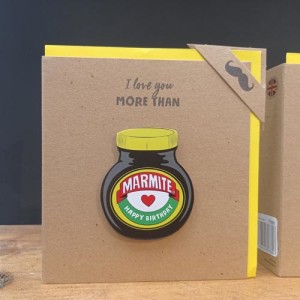 Another licensing highlight at PG Live was seeing Tache ‘s Unilever brand cards. It has developed a Famous Foods range of 3D cards featuring brands such as Marmite, Colman’s Mustard, Cornetto and Pot Noodle.
Another licensing highlight at PG Live was seeing Tache ‘s Unilever brand cards. It has developed a Famous Foods range of 3D cards featuring brands such as Marmite, Colman’s Mustard, Cornetto and Pot Noodle.
It is good to see a brand owner like Unilever being willing and able to engage with a creative card company like Tache. The partnership has resulted in some innovative cards that are fun and bright interpretations of well established brands. I am sure Unilever will welcome the way that Tache is celebrating the brands and also find the social sharing cards deliver a great way of reinforcing the brands’ visibility in the market.
It should open up new retail doors for Tache as well.
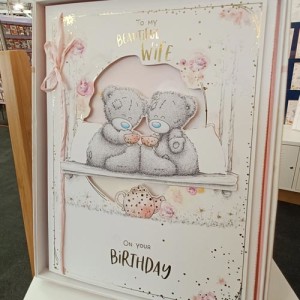 Seeing Tatty Teddy on the Carte Blanche stand reinforced the point that greeting cards are a good source for brands that drive licensing programmes. Carte Blanche had a broad range of cards on show covering a breadth of occasions and recipients.
Seeing Tatty Teddy on the Carte Blanche stand reinforced the point that greeting cards are a good source for brands that drive licensing programmes. Carte Blanche had a broad range of cards on show covering a breadth of occasions and recipients.
A card programme like this provides a good starting point and foundation for a licensing programme. A key strength is the retail distribution cards can get, but also the richness of art and design a successful card brand can generate.
Licensees have some great artwork to use and also artwork that has been tested in core categories.
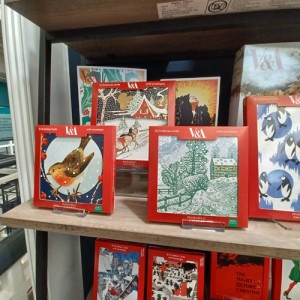 Similarly it was interesting to note how card companies like Kingfisher enjoy working directly with creatives in the licensing space, in its case British artisan designer Julie Dodsworth. Kingfisher has created a range of Julie Dodsworth cards and has worked very closely with Julie to do so. It highlighted how it likes this process as it allows it to be very specific and bespoke in design terms. It can create designs to suit specific retail channels and distribution opportunities. This is another selling point for licensing and one that has a value in the retail context I think.
Similarly it was interesting to note how card companies like Kingfisher enjoy working directly with creatives in the licensing space, in its case British artisan designer Julie Dodsworth. Kingfisher has created a range of Julie Dodsworth cards and has worked very closely with Julie to do so. It highlighted how it likes this process as it allows it to be very specific and bespoke in design terms. It can create designs to suit specific retail channels and distribution opportunities. This is another selling point for licensing and one that has a value in the retail context I think.
It was also good to see a strong representation of heritage brands at PG Live. Companies like Woodmansterne and Museums & Galleries have developed strong relationships with museums such as the Ashmolean and the V&A to ensure a constant flow of card ready artwork and working together on specific collections to tap into key selling occasions like Christmas.
 Finally, as a street art fan it was a magic moment this week to see street artist Super-A creating a supersized street art piece in Leicester featuring Shaun the Sheep and Blitzer. The artwork, located near Welford Road, is part of Leicester’s Bring the Paint festival.
Finally, as a street art fan it was a magic moment this week to see street artist Super-A creating a supersized street art piece in Leicester featuring Shaun the Sheep and Blitzer. The artwork, located near Welford Road, is part of Leicester’s Bring the Paint festival.
It is a great example of the impact well known characters can have – whether on the high street, in street art or in Platinum Jubilee parades licensing, licensed characters and brands can catch the eye.
Ian Downes runs Start Licensing, an independent brand licensing agency. His Twitter handle is @startlicensing – he would welcome your suggestions for what to look out for.

























